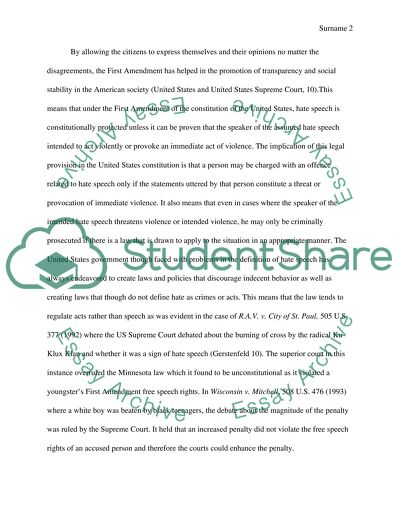Cite this document
(“Hate Speech and the First Amendment Research Paper”, n.d.)
Retrieved from https://studentshare.org/english/1495888-hate-speech-and-the-first-amendment
Retrieved from https://studentshare.org/english/1495888-hate-speech-and-the-first-amendment
(Hate Speech and the First Amendment Research Paper)
https://studentshare.org/english/1495888-hate-speech-and-the-first-amendment.
https://studentshare.org/english/1495888-hate-speech-and-the-first-amendment.
“Hate Speech and the First Amendment Research Paper”, n.d. https://studentshare.org/english/1495888-hate-speech-and-the-first-amendment.


